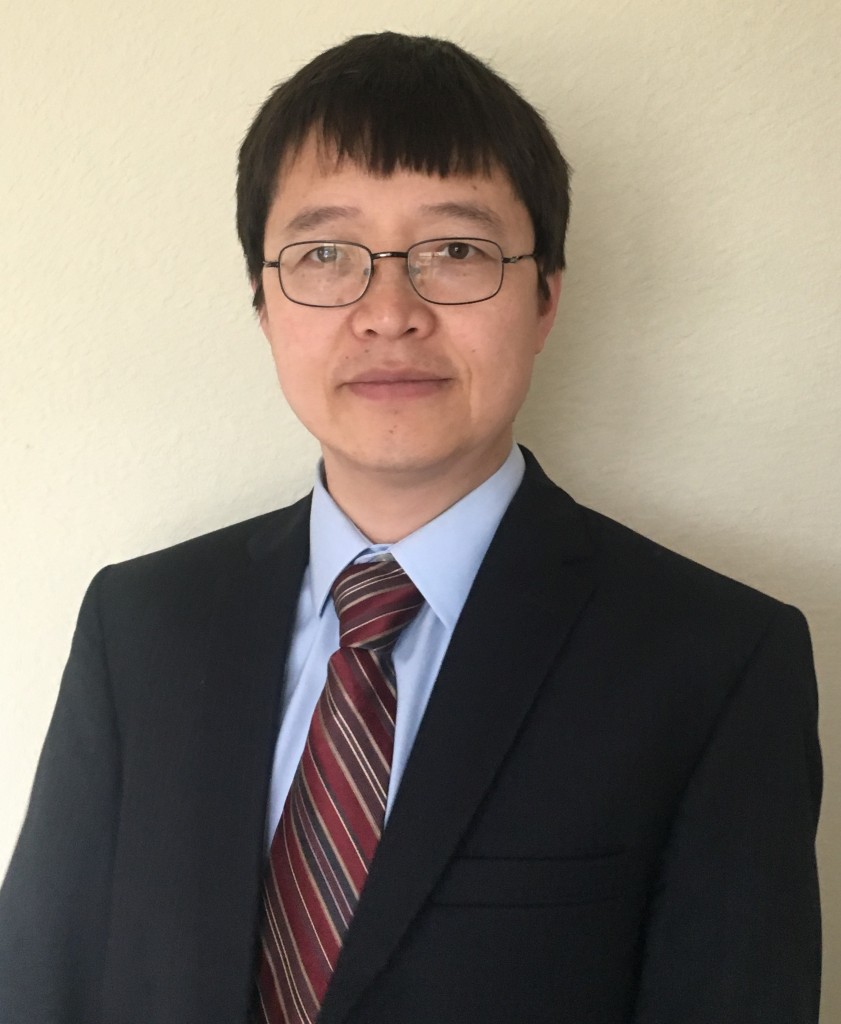![]()
[hr]A $475,000 grant from the National Science Foundation will further JSU’s research with water soluble iron oxide nanoparticles that aims to understand the fundamental principles for delivering timed-released dosages of medicines such as chemotherapy while not destroying healthy cells and reducing side effects.
Dr. Yongfeng Zhao is an assistant professor in the Department of Chemistry, Physics and Atmospheric Sciences at Jackson State University with extensive research in cancer. He said he knows that many patients with advanced-stage cancer have a low chance of recovering, so his passion is to develop future technology that will improve efficacy and, ultimately, lead to a cure.

The principal investigator said his research does not include clinical tests; however, it does develop tools to study principles that can be potentially useful. These include developing a systematic approach for monitoring, delivering and releasing life-saving treatments.
Zhao said to carry out the project’s mission in the College of Science, Engineering and Technology “the goal is to develop new methods for the synthesis of water soluble ‘extremely small iron oxide nanoparticles’ (ESIONPs).” Along with that, his other goal is to gain a “fundamental understanding of relaxivity of ESIONPs interacting with bioactive molecules.”
Using MRI to view molecular targets
In other words, by increasing relaxivity of specific iron oxide nanoparticles, researchers can develop a better view of molecular targets inside the body by using magnetic resonance images (MRI). In fact, MRI is considered one of the most powerful imaging technologies in hospitals.
Unlike MRI, which is ideal for evaluating soft tissue (the brain, heart, muscles), an X-ray involves exposure to radiation when examining bones. So, that makes an MRI much safer than X-rays.
“MRIs provide images with excellent anatomical details, especially of soft-tissue in a noninvasive and real-time monitoring manner,” Zhao said.
“Most importantly, there is unlimited tissue penetration. We will explore a stepwise growth procedure to prepare water soluble ESIONPs with controlled sizes for high-MRI performance. In addition, surfaces of ESIONPs will be modified to carry bioactive molecules such as chemo drug. Then, the capability of ESIONPs to load and release bioactive molecules will be studied. Next, we will investigate the change of the MRI signal for ESIONPs as they interact with bioactive molecules.”
Cutting-edge research
By all measures, Zhao said JSU’s work amounts to cutting-edge research. This is because the project explores novel methods to synthesize water soluble ESIONPs with high-imaging performance for delivering bioactive molecules.
“The ability to monitor drug delivery and its release throughout the body will significantly improve treatment by adjusting the dosage and frequency based on real-time drug uptake information,” Zhao said. He reiterates that the drug delivery is guided and monitored with “noninvasive” imaging.
As his research develops fully, he said, medical experts would be able to give dosage that is lower or higher based on the concentration already in the body. “If you’re unable to see the delivery in the body, you don’t know the concentration. You could possibly give too much or too less of the therapy. But if you can see, you can track drug delivery in the body and adjust according to the concentration.”
Furthermore, Zhao said, “A full implementation of imaging-guided drug delivery would require that medicines be traced in the body as they enter the bloodstream, accumulate in a specific area and are released to provide targeted treatment. Nanoparticles can improve drug efficacy and reduce toxicity by altering pharmacokinetics of drugs. To track the delivery behavior of the drugs, the intrinsic drawback for optical tags lies in the limited tissue penetration.”
For now, though, systemic therapy is the common approach to treat diseases such as advanced-stage cancer. However, systemic toxicity is the major drawback that limits the use and effectiveness of such therapies. Zhao said.
Supportive and friendly research environment
He said JSU is well-positioned to conduct this research.
“We have the infrastructure that is required to conduct this research and the instruments available within our JSU community, especially in the Department of Chemistry. We have a very supportive and friendly research environment, and this grant will allow us to expand even further so that our students benefit,” Zhao said.
“This research provides an excellent opportunity and training for our undergraduate and graduate students seeking careers in the medical and pharmaceutical fields. Additionally, our research project is highly interdisciplinary and involves chemistry and biomedicine to study how drugs interact with nanoparticles and their potential use for clinical drug delivery.”
Meanwhile, Zhao touted JSU’s collaboration with Washington University in St. Louis and its medical schools. “Students will have hands-on training while working potentially with MRI scanners to study the interaction of iron oxide nanoparticles with drugs.” Also, he said, students will attend conferences for greater research exposure.
Overall, Zhao expects the ongoing research to provide an epic opportunity to help long-suffering patients. “Years ago, I started developing smart tools that would ultimately result in life-saving drugs that would eliminate toxicity and debilitating side effects from treatments such as chemotherapy.






